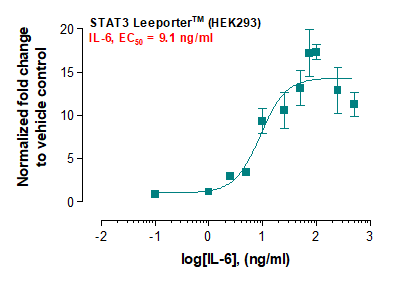Mouse RANK Ligand
Shipping Info:
For estimated delivery dates, please contact us at [email protected]
| Amount : | 100 µg |
| Purification : | Reducing and Non-Reducing SDS PAGE at >= 95% |
| Content : | Lyophilized from a sterile (0.2 micron) filtered aqueous solution containing 10 mM sodium phosphate, 50 mM sodium chloride, pH 7.5 Sterile water at 0.1 mg/mL |
| Storage condition : | Store at -20°C |
| AA sequence : | MPAMMEGSWLD VAQRGKPEAQ PFAHLTINAA SIPSGSHKVT LSSWYHDRGW AKISNMTLSN GKLRVNQDGF YYLYANICFR HHETSGSVPT DYLQLMVYVV KTSIKIPSSH NLMKGGSTKN WSGNSEFHFY SINVGGFFKL RAGEEISIQV SNPSLLDPDQ DATYFGAFKV QDID |
Predicted MW:Â Monomer, 19.5 kDa (175 aa)
Receptor activator of nuclear factor kappa-B Ligand (RANK Ligand) is a cell-bound marker related to the tumor necrosis factor (TNF) family of proteins. RANK Ligand plays a critical role in bone metabolism and osteoclast differentiation. T cell expression of RANK Ligand promotes dendritic cell maturation.
Endotoxin: Less than 0.1 ng/µg (1 IEU/µg) as determined by LAL test.
Biological Activity was determined by Bioactive protein. Centrifuge vial before opening, Suspend the product by gently pipetting the above recommended solution down the sides of the vial. DO NOT VORTEX. Allow several minutes for complete reconstitution. For prolonged storage, dilute to working aliquots in a 0.1% BSA solution, store at -80°C and avoid repeat freeze thaws. Upon reconstitution, a small amount of visible precipitate can be expected. A 10% overfill has been added to the total material vialed to compensate for this loss.
For Research Use Only. Not for use in diagnostic/therapeutics procedures.
| Subcellular location: | Secreted |
| Post transnational modification: | The soluble form of isoform 1 derives from the membrane form by proteolytic processing. The cleavage may be catalyzed by ADAM17. A further shorter soluble form was observed. |
| Tissue Specificity: | Highly expressed in thymus and lymph nodes, but not in non-lymphoid tissues and is abundantly expressed in T-cells but not in B-cells. A high level expression is also seen in the trabecular bone and lung. |
|
There are currently no product reviews
|


















.png)












